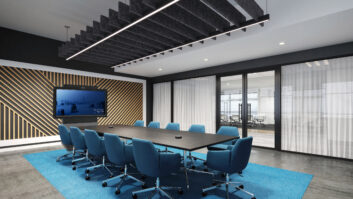My favorite blogs to read are those where other installers share their personal experiences in the field and their interactions with clients. It helps us to see that big company, small company, young company or industry vet, luxury high-rise condo in Manhattan, or 1,000 square foot cookie-cutter development in BFE, things are pretty much alike all over.
Last week I read a blog by Heather Sidorowicz titled, “When Failure is Not an Option.” So, while I’m reading Heather’s post, I come across this paragraph: “11:56 a.m.: “Hey,” says my tech, “so, we’re not getting a picture from the FioS boxes to the TVs. I called Atlona and…” he pauses, “turns out Cisco and Scientific Atlantic don’t currently support HDbaseT. To alleviate HDMI issues we had chosen to go with Atlona’s new HDBaseT baluns. This was supposed to solve problems, not create them. So please, write it down and make a mental note. Currently HDbaseT is not supported by Cisco (the boxes we had) and Scientific Atlantic.”
I paused, that weird cold sweat breaking out on my forehead. I went back and I re-read it again. I’m a big proponent of HDBaseT technology—I was on their panel at last year’s CEDIA EXPO extolling how great it has worked for my company—and this was definitely news to me. And not the good kind of news like, “ALIENS HAVE COME BRINGING RENEWABLE ENERGY AND LIGHTSABERS!” It was more like a 72-point headline reading “WORLD ENDS!” with appropriate 130-dB alarm klaxons and those flashy fire strobe lights.
That’s because I am planning on using multiple Atlona HDBaseT transmitters all throughout my upcoming mega install job. These transmitters will just so happen to need to transmit cable TV… from Scientific Atlanta cable boxes.
Not doubting Heather—OK, kinda doubting Heather—I went over to the HDBaseT website and started clicking around. There’s were lots of things about how we should imagine the future and how the HDBaseT logo all but guarantees world peace and how it’s the greatest thing since the discovery of fire. Lots of that. But there was nothing about Cisco or Scientific Atlanta boxes and any compatibility issues. So I went searching through the FAQ and the glossary. Still nothing. More praise, but no giant flashing red banner at the top of the page saying, “INSTALLERS! BE AWARE! OUR TECHNOLOGY IS NOT SUPPORTED BY CISCO OR SCIENTIFIC ATLANTA! TWO MAJOR SUPPLIERS OF CABLE BOXES! FOR THE LOVE OF GOD, KNOW THIS BEFORE YOU GO INTO THE FIELD!”
So I clicked over to Atlona’s site. They position themselves as a custom company for the custom installer, so I thought that surely they’ve got a brother’s back, right? I mean, I must have just missed the giant flashing warning banner the first few times I visited their site to spec in the product for my job. Nope. I even searched Atlona’s site for “Cisco” and “Scientific Atlanta” figuring surely there was something I had missed.
But no.
So I called their tech support department, and it was like, “Oh, yeah. Well, you see, the thing about those boxes is, they use HDMI 1.2 tech, and HDBaseT needs HDMI 1.3 or newer. So, just use a different box.”
Oh! Brilliant! Just use a different box… Of course, I’ll just go down to my local Time Warner office and ask them to scrap their entire inventory and brew me up a new batch of boxes that will work with my tech. No, it’s cool, I’ll wait…
See, in my part of the world, we have a lot of communities that sign lengthy HOA agreements with a specific cable company. (And by the way, there are only two cable options to begin with…) So, you have entire neighborhoods locked up with Time Warner, who uses these lame boxes.
Now, to Atlona’s credit, they quickly recommended a product that would solve my problem: the $230 (MSRP) HDSync that is an “HDMI EDID Recorder/Writer with Serial Controller.” Not a problem on a big job, but potentially this kind of thing is something that a smaller, one-room customer would seriously grouse over.
The point is, this isn’t the kind of information that we should have to just stumble across or even actively seek out. It isn’t the kind of thing that we should have to spend hours struggling over in the field discovering the hard way. It shouldn’t slowly creep from installer-to-installer. This is the kind of thing that manufacturers should proactively go out of their way to tell us about. “Hey, guys! We love that you’re using our product, but we found what could be a pretty major problem for some of you. Here is something you need to know!” Also, maybe a note inside of the box wouldn’t kill anyone?
Over the years I’ve run into multiple items like this. Things like needing to add 0.5-second delays between macro steps on certain remote controls just because. Or beating your head against the wall only to discover that a component uses toggling (A and B version) IR codes. Or TVs that would not show any cable TV picture until you scanned in all of the channels.
It would be great if there were a resource where we could share all of these things, letting other installers stand on our shoulders so the entire industry doesn’t need to continually reinvent the wheel—or rather continue to bash their heads bloody—in every market across the country.
If you’ve got any unique problems you’ve discovered—and even better, the solution— please share it in the comments section. I’m all ears.
John Sciacca is principal of Custom Theater and Audio in Myrtle Beach, SC.







